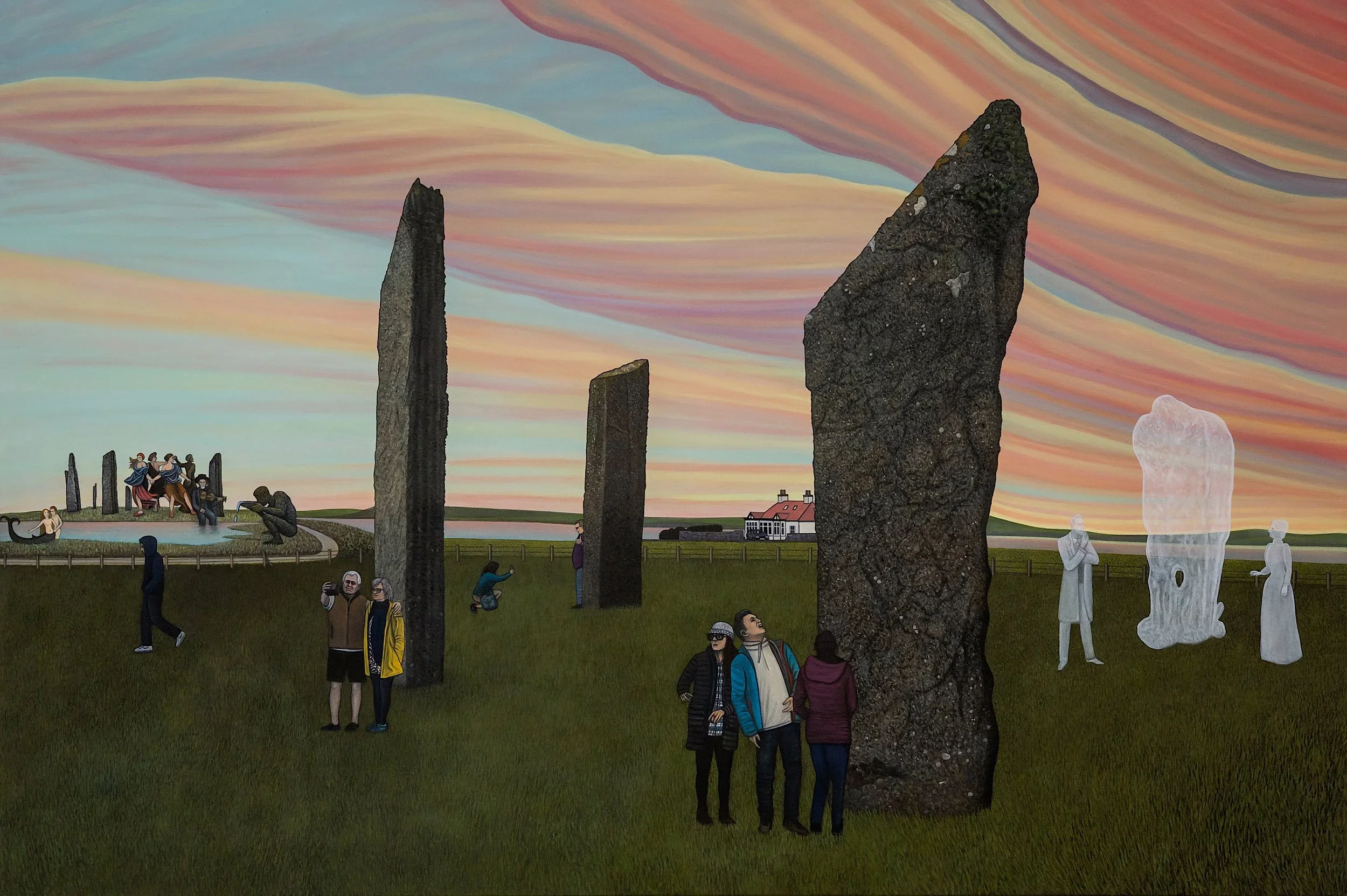‘A Mish-Mash Mongrel Nation’: Ben Edge at the Fitzrovia Chapel
Children of Albion (2025) Image credit: BJ Deakin / Ben Edge
A nude giant stands over London’s cityscape, coal tumbles out of Margaret Thatcher’s mouth, and a green apple bears a face that faintly resembles Shrek. It’s a collision of the delightfully mystical and recognisably mundane that makes every painting in Ben Edge’s new exhibition, Children of Albion, so fascinating to explore. Laden with cryptic symbolism and historical allusions, his work is an ode to the stories that make up Britain.
‘We're a mish-mash mongrel nation,’ Edge explains. ‘Ideas come from over the water and they get mobilised into British culture and become the new.’
Based in North London, Ben Edge’s work in diverse mediums—music, videos, visual art—is connected by an urge to dissect British history and use folklore to re-enchant the country’s landscape. Amidst the ongoing cultural battle over English nationalism and identity, his latest exhibition at the Fitzrovia Chapel couldn’t feel more timely.
Orkney (2022) Image credit: Ben Edge
‘We're a mish-mash mongrel nation.’
In an oil painting entitled Orkney, modern-day tourists take selfies around the Stones of Stenness, a Neolithic stone circle on Orkney, while two spectral Victorians examine an equally spectral depiction of the Odin Stone, a monolith in the circle which was destroyed in 1814. These visitors throughout time sit alongside sly allusions to classic art—can you spot how the folk dancers on the left are posed like a famous French painting?
‘When I was doing all my research around the country,’ Edge says, ‘I started going to local museums, learning bits and bobs, and began thinking, “How does this all slot together?”’ He’s fascinated by the origins of folk beliefs: a story intended to scare children into not playing in lakes may have inspired the Loch Ness Monster’s legend.
The Industrial Revolution has stripped these myths away, he argues, but that only means ‘people are looking for a new mythology, a new code to live by’. You can see this hybrid of myths in Dreaming at Rudston Monolith, where an ancient monolith sits companionably amidst gravestones in a Christian churchyard, with animals straight out of a fairytale snuggling beside humans.
‘People are looking for a new mythology, a new code to live by.’
‘It’s an inclusive vision that’s about nature and honouring your home,’ Edge says of his work. ‘It's a collective therapy session. I want this to be where we can look into our own pasts.’
Dreaming at Rudston Monolith (2024) Image credit: Ben Edge
The show unveils his eclectic style. In Edge’s symbolism-laden masterpiece Children of Albion, he explains that the centuries of British history he condenses together asks the viewer, ‘This is us. How do we stop pointing fingers at each other?’. Avoiding the uncritical worship of nostalgia as well as wholesale condemnation of the past, his work shines a spotlight on the complexities of British identity.
‘This is us. How do we stop pointing fingers at each other?’
Interest in folklore is at an all-time high: a record-breaking 25,000 people visited Stonehenge during the summer solstice, and independent folk festivals are flourishing nationwide. These once-niche traditions may soon become mainstream, but Edge’s work captures their revolutionary quality.
‘Watching the sunrise at Stonehenge changes you in a weird way, and you don't really know why,’ he says, a sentence which could as easily describe the kaleidoscopic effects of his work. From the beauty of nature to the challenges of history, Edge offers what he calls a ‘healing conversation’ about the poetic imagination of this green and pleasant land.
Ben Edge’s Children of Albion can be viewed at the Fitzrovia Chapel until November 26th



